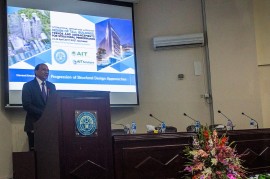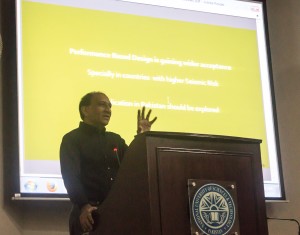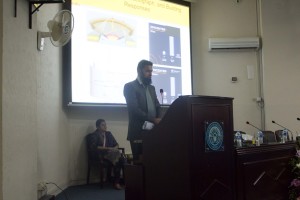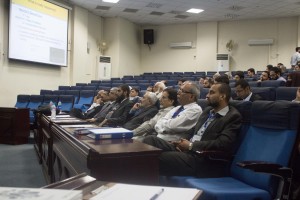
25 April 2017, Pakistan
Urbanization is one of the major global challenges of this era. In Pakistan, it is confronted over the years with rapid growth of urbanization at an annual rate of three percent – the fastest pace in South Asia. The United Nations Population Division estimates that, by 2025, nearly half the country’s population will live in urban areas.
The demand and complexity is increasing for built environment including accommodation, offices, and commercial areas. Cities will need to be denser and taller in the future. The efficient way to accommodate rapidly growing urban population will be to develop vertical cities with tall buildings innovative structural systems. The future tall buildings will be able to generate their own energy from renewables sources.
To address the issues related to performance and resilience of tall buildings, the Asian Institute of Technology (AIT) and AIT Solutions in collaboration with National University of Science and Technology (NUST), Islamabad, Pakistan organized a two-day international seminar and workshop on Performance-based Design of High-rise RC Buildings certified by Pakistan Engineering Council held on 24-25 April 2017 at NUST Institute of Civil Engineering building.
The first day covered topics including: Progression of Structural Design Approaches (From Performance to Resilience) by Dr. Naveed Anwar (AIT Solutions); Dynamic Response of Tall buildings, Its Evaluation, and Mitigation by Effective Control Mechanisms by Dr. Munir Ahmed(CUST); A Modified Response Spectrum Analysis Procedure (MRSA) to Determine the Nonlinear Seismic Demands of Tall Buildings by Engr. Fawad Najam (AIT); An Early Earthquake Loss Assessment Framework by Dr. Shaukat Khan (Abasyn University); and Structural Health Monitoring: An Overview by Dr. Muhammad Usman (NUST).
More than 100 professionals, engineers, developers, researchers, and students joined the event. During the second day workshop, Dr. Naveed Anwar discussed the Application of Performance-based Design to actual projects through Case Studies. Use of software tools: ETABS and Perform 3D; Matlab and SIMULINK was discussed by Dr. Munir Ahmed and Dr. Muhammad Usman respectively.
Every presentation was followed by Question and Answer session. The event served as an extensive knowledge sharing activity for the professionals associated with the development of tall buildings.
Presentations are available at this link




